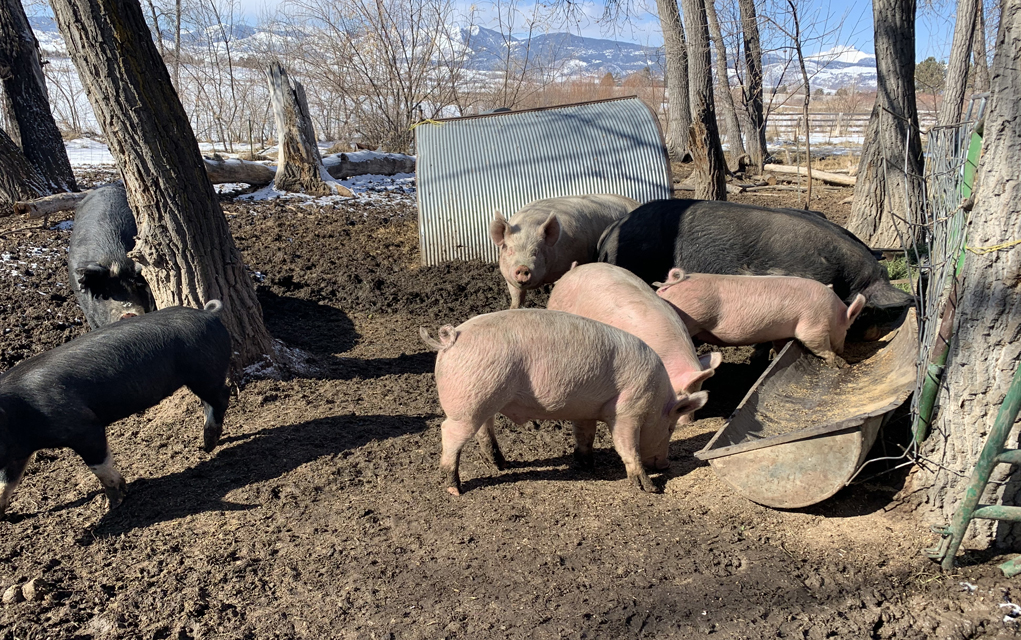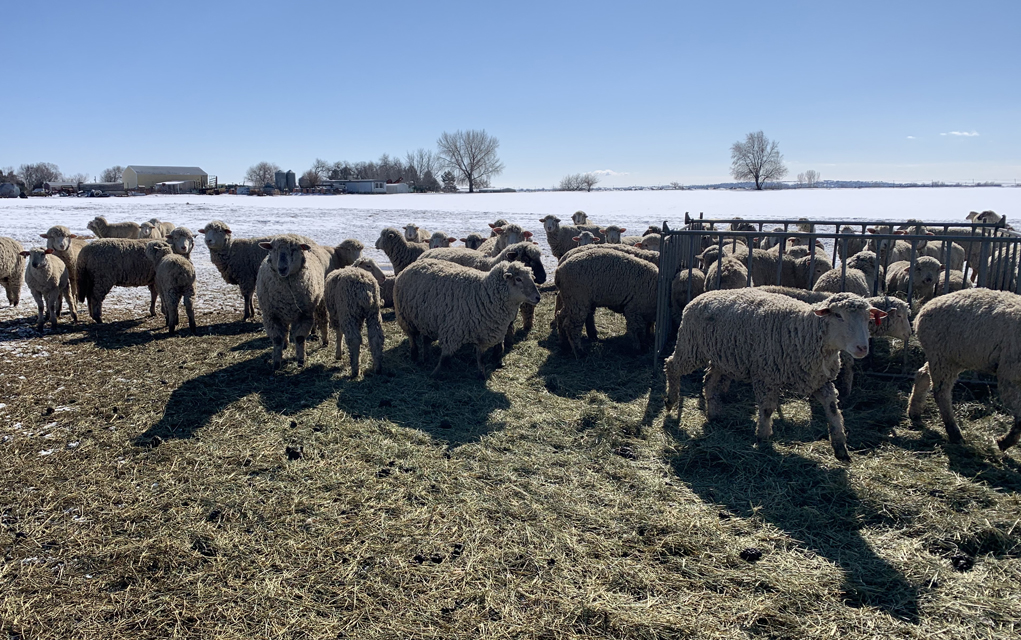
I was sitting in Blackbelly one afternoon when a rock star walked in. The butchers dropped their tools and shook hands with the man in a puffy coat. Minutes later, they left to unload what must have been hundreds of pounds of meat from a truck.
“That’s Clint Buckner,” I was told, as if I were supposed to know that already.
I, and you, can’t go too many places in Boulder County without seeing Buckner Family Farm, or their trade name Boulder Lamb & Meats, on the menu. Restaurants emblazon it on their menus as a point of pride. It’s local, all grass-fed, they say, and it’s the best meat you’ve ever tasted.
I’ve since had Buckner Family Farm pork, beef and lamb many times and, yes, it’s good — one of the most memorable meals I’ve ever had is a 3-oz Buckner filet mignon I once took home and grilled. I literally scraped off the caramelized onions and herb butter I’d topped it with after one bite because the meat’s flavor and texture were singularly perfect.
But I didn’t know why it tasted so good, and why so many chefs in Boulder County seem to agree on how good it tastes. So I visited the Buckners one morning on their Longmont ranch. There’s one plot with around 27 acres where pigs and chickens walk freely and lambs graze in a herd, and another 800-some acres leased from the County where the animals graze on alfalfa — for the lambs and cattle, no corn, no grain, just grass.
“We really believe in animals eating what they’re supposed to eat and having an existence that they’re supposed to have,” MaryKay says from their modest kitchen, Clint sharpening knives in the sink.

But learning the day-to-day mechanics of raising 350 sheep, 400 cattle and 150 pigs per year took some time.
“We knew absolutely nothing,” MaryKay says of their beginnings in 2011.
If there is a routine on the ranch, it’s the routine an ER doctor has—clock in, scrub up and go where you’re needed. In fact, it’s an apt metaphor for the hands-on training the Buckners have undergone on the ranch.
“Let’s just say this,” Clint says, “I have personally done amputations. I’ve done castrations on every species that we have, I’ve stitched up wounds with dental floss and betadine, and at first we didn’t know how to do any of that stuff.”
The meat the Buckners sell is literally hand-raised. Animals live more than twice as long on the ranch than they do in conventional farms, which contributes to better-tasting meat. Cattle are raised to over 2 years old, which is extremely uncommon. Lambs are slaughtered at one year, as opposed to five months.
“Which adds a lot of fat,” Clint says of fattening lambs and slaughtering them young, “but it doesn’t necessarily add a lot of complex flavor. Americans are really used to fat as a flavor, but when you get some of our meat, the difference is it tastes more like meat and less like fat.”
The animals on the Buckner Family Farm will all die some day. Many will be sent to slaughter so we can eat their meat and put it on our menus and write stories about how good it all tasted. But the key to why it might taste so good, I realize, listening to Clint talk about the effort involved in raising these animals or watching MaryKay pet the friendly boar in the slop-pit munching on feed, is the love the Buckners have for their animals.
“We had a piglet once, it was like two days old, so it’s like the tiniest little thing ever,” Marykay says. “And I went out there one day and it had this gash. You could see all the way to its leg bone, but it didn’t strike an artery, so it wasn’t really bleeding. We called our vet who was just like, ‘Put it down.’ But Clint said, ‘You know, I’ve hunted, I’ve stitched stuff up, I’ve stitched up amputated legs. If it’s going to die anyway, let’s just try it.’
“I don’t know if you’ve ever picked up a baby pig. They squeal like bloody… and all the pigs come running at you because they’ve got this defense mentality. The sow will push through a fence to get to a baby piglet. So I ran it up to the house and our daughter came in, and we held it down, and Clint got dental floss. We got betadine and Neosporin, and he stitched it, and we put it out there and six months later it went to market. And it was beautiful. It was beautiful.
“I don’t know that I could ever lose that connection to the fact that every single one of them is a life,” MaryKay says. “And our whole thing is we want our animals to just have one bad day.”
‘We were about to go bust’
Clint and MaryKay both grew up around farms — MaryKay in Nebraska, her parents butchers; Clint’s family owned one of the largest sheep ranches in the country in Twin Falls, Idaho.
But in 2008, Clint was working as a mortgage broker, when “that job basically died.” So with two small children, and some hands-on help from the family, the Buckners decided to make a go of it in the lamb game — selling wool, not meat.
“We quickly discovered that the wool market is not profitable at all,” Clint says.
Out tens of thousands of dollars and with few options, MaryKay suggested having one of their lambs slaughtered. They brought the meat around to restaurants in Colorado.
“The first place we went, they just were like, ‘Oh, this is amazing. How do I get more of this?” Clint says.
So the two former vegetarians who met 30 years ago at Alfalfa’s started raising lambs for meat. The Buckners won early support from local chefs Kyle Mendenhall, Samuel McCandless and Alberto Sabbadini and restaurants like Frasca, the Stanley Hotel and Aspen’s esteemed The Little Nell, which soon took to ordering six lambs per week.

Today, the business has grown with the help of the local food scene: “It’ll sound like [we sell to] a lot [of restaurants], but we only sell a little bit to each one, because what we try to do is sell the whole animal. Let’s say Salt wants all the pork chops in a week, then we’ve got to figure out how to sell the shoulders and bellies and necks to somebody else. So one of our main jobs is to figure out how to sell the whole animal because, as you know, animals don’t grow in parts,” Clint says.
“We really rely on having chefs who understand that about us and are really flexible.”














